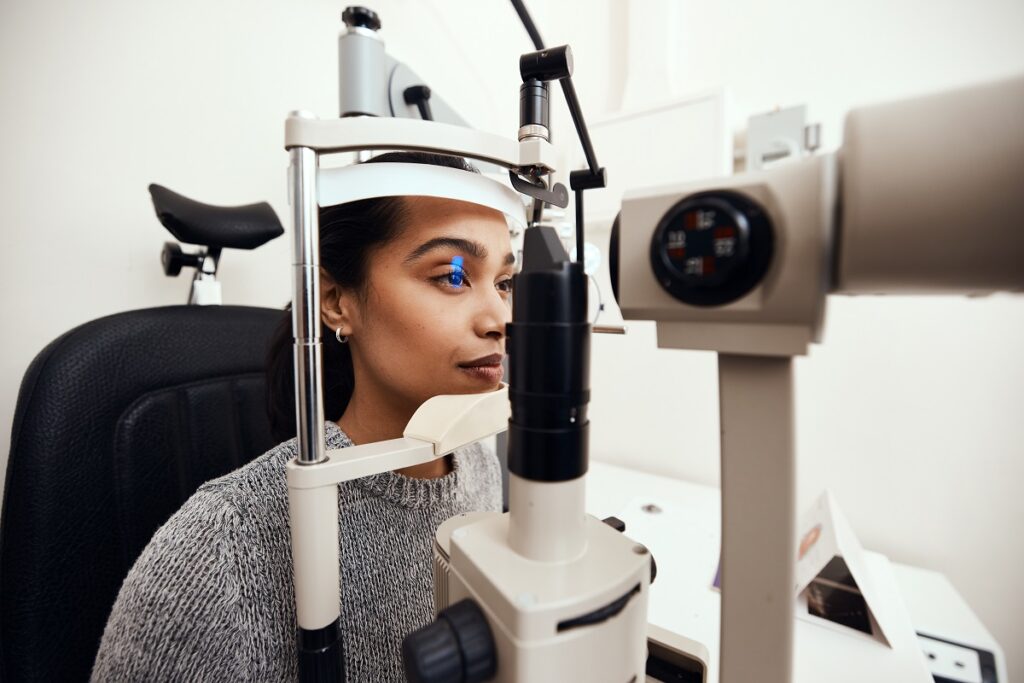Your Citizen Eye Doctor Optometrist: Devoted to Clear Vision in Riverside
Wiki Article
The Comprehensive Eye Exam: What to Anticipate Throughout Your Visit to the Eye Physician
A check out to the eye doctor for a thorough eye examination is more than a regular examination; it is an important step in guarding your aesthetic health. What specifically occurs throughout the eye health and wellness assessment, and just how does it influence the prescription procedure?First Examination
The initial appointment during an eye exam offers as a critical structure for understanding a person's visual wellness requirements. This phase sets the tone for the whole evaluation procedure, allowing the eye doctor to gather necessary info concerning the individual's case history, lifestyle, and details vision worries. By thoroughly evaluating any kind of pre-existing conditions, medicines, or previous surgeries, the eye care specialist can tailor the evaluation to resolve individual demands properly.
In addition, the first consultation is an opportunity for patients to voice any concerns or questions, cultivating a joint partnership with their medical care provider. This interaction not only guarantees that the client really feels educated and comfortable yet likewise empowers them to get involved proactively in their eye health and wellness monitoring. Collectively, these discussions make it possible for the eye doctor to create an individualized assessment plan, ensuring optimum care and precise medical diagnosis.
Visual Acuity Examination
Kicking off the core parts of an eye evaluation, the aesthetic acuity examination is developed to analyze the sharpness and quality of a client's vision. This crucial analysis assists determine just how well a person can recognize letters or signs at a standard distance, normally utilizing a Snellen graph (Opticore Optometry). The chart makes up rows of letters that lower in size inside out, with the patient positioned at a normal distance of 20 feet
During the examination, the person is asked to cover one eye and read aloud the tiniest line of letters they can see clearly. This process is repeated for the various other eye. The results are tape-recorded as a portion, with 20/20 vision indicating typical aesthetic acuity-- where the patient can see at 20 feet what a person with regular vision can see at that range.
The visual acuity test likewise recognizes possible refractive mistakes such as astigmatism, hyperopia, or nearsightedness, which might necessitate corrective lenses. By establishing a baseline of aesthetic performance, the test is an indispensable diagnostic tool that aids the eye care professional in developing a suitable treatment plan tailored to the client's distinct visual needs.
Eye Health Assessment
Complying with the visual acuity examination, an extensive eye health analysis is conducted to guarantee the general wellness of the eyes. This crucial sector of the eye exam entails a complete assessment of both the exterior and interior frameworks of the eye.With the use of ophthalmoscopy or fundus digital photography, the retina, optic nerve, and blood vessels are meticulously evaluated. In lots of cases, pupil extension is performed to improve presence of the internal eye structures, although this may result in momentary light level of sensitivity for the client.
Furthermore, intraocular stress is gauged to screen for glaucoma risk. This is normally done using tonometry, which can detect raised pressure levels that might suggest possible damages to the optic nerve. Jointly, these analyses form an extensive analysis to preserve ocular health and wellness.
Refraction and Prescription
Refraction is an advanced procedure conducted by eye treatment specialists to figure out the accurate lens power required to fix refractive mistakes such as nearsightedness, hyperopia, presbyopia, and astigmatism. The goal of this procedure is to assess exactly how light bends as it passes through the eye, permitting the expert to identify whether restorative lenses are required for improved aesthetic acuity.Throughout the refraction procedure, the client is asked to check out a phoropter, a tool that consists of different lenses. The professional will methodically change these lenses and ask the client to contrast clarity between options up until the ideal possible vision is accomplished. This procedure is vital in crafting an exact prescription that specifies the ideal lens power for glasses or contact lenses.
The prescription derived from this procedure not only optimizes vision however likewise acts as a foundation for picking ideal corrective glasses. It is vital to make certain that prescriptions are on a regular basis upgraded, as changes in vision can happen gradually, emphasizing the significance of regular eye evaluations. This thorough focus to information assists keep clear, comfy vision in every day life.
Follow-Up Suggestions

Throughout a follow-up browse through, the eye medical professional will certainly perform Visit This Link a collection of tests to review aesthetic skill and look for any type of modifications in vision her explanation that might demand an update to the prescription. In addition, the follow-up gives a chance to talk about any kind of discomfort or issues experienced with existing eyewear. Modifications can be made to make sure comfort and effectiveness, whether with lens alteration or frame changes.
For people with recurring conditions such as glaucoma, diabetes-related eye problems, or macular deterioration, more regular follow-ups may be required. These consultations are vital for managing and potentially slowing down the development of eye disease. Sticking to these recommendations can considerably contribute to preserving visual health and stopping lasting problems.
Verdict
The thorough eye exam is a necessary procedure for maintaining visual health, encompassing a comprehensive analysis of case history and vision problems. Key components include the aesthetic acuity test, which assesses sight quality, and the eye health and wellness analysis, which takes a look at the general problem of the eyes. Refraction examinations assist figure out the exact lens prescription needed for optimum vision improvement. Follow-up referrals give advice for ongoing eye treatment, ensuring that any prospective concerns are resolved immediately and effectively.A see to the eye medical professional for a comprehensive eye test is more than a regular examination; it is a vital step in guarding your aesthetic health.Kicking off the core parts of an eye examination, the visual acuity test is designed to analyze the sharpness and clarity of an individual's vision.Complying with the visual skill test, an extensive eye health and wellness analysis is conducted to guarantee the overall health of the eyes. These visits allow the eye care expert to monitor adjustments in vision, upgrade prescriptions, and examine the total health and wellness of the eyes. Key parts include the visual skill test, which examines vision quality, and the eye health read what he said and wellness evaluation, which analyzes the overall problem of the eyes.
Report this wiki page